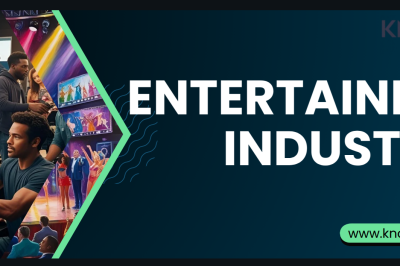In 2025, the entertainment landscape trends is experiencing remarkable upheavals from tech advances, consumer attitude changes, and global socio-economic issues. The rise of AI in content-making, changes in the streaming domain, and the resurgence of live events make this space dynamic and multidimensional.
Streaming Services: Breaching Competitive Barricades
Streaming platforms are taking center stage in the entertainment industry, but the competition is growing more intense. As the first name in the industry, Netflix has problems under the ever-changing rules, such as geopolitical trade tensions and fluctuations in consumer preference. Increased investor worry occurred after the company recently canceled the public reporting of subscriber numbers. Besides, investors would focus their attention on other parameters, such as engagement data from various third-party platforms and Nielsen ratings. Despite all this, Netflix remains resilient- and relies on its able recommendation algorithms and loyal user base to withstand competition in the market.
Nonetheless, other streaming services have begun changing their strategies to make a profit. Instead, a focus on content quality and engagement has led to platforms betting heavily on original content and other revenue-generating opportunities. The streaming wars themselves are evolving as companies look for a sustainable growth trajectory in the window of opportunity that is currently overcrowded with competitors.
AI and Technology: Advances in Content Creation
Artificial intelligence has gained increasing traction in the entertainment sphere, with all aspects of production, from writing concepts to cinematography, undergoing fundamental changes thanks to AI technologies. With great-enhanced processes, this unity integrates better ways of story and consumer engagement.
In conjunction with AI, the advent of social video platforms is redefining content consumption. The UGC and short-form videos steal a major chunk of audience focus away from the traditional media formats. TikTok and YouTube are now becoming the nerve center of entertainment, setting trends and changing the landscape of audience expectations.
Live Events and Experiential Entertainment: A Resurgence
The world of live entertainment is now rejuvenating, having suffered a dip from the pause due to worldwide situations. Audiences are flocking back to theatres, concerts, and festivals in search of immersive and shared experiences. Investments are being made in the live production industry to meet the increasing demand from the facilities.
In the United Kingdom, the National Theatre has started a national training program to counter the shortfall in skilled backstage workers. The program is to fill key areas in costume and set design, props, and technical operation so that live theatre productions can be sustained, reflecting a more extensive recognition of calls for live entertainment from cultural and economic angles.
Celebrity News: Controversies and Cultural Impact
Celebrity actions and public opinion still heavily influence the entertainment world. Actor Mickey Rourke recently withdrew from Britain’s “Celebrity Big Brother” after allegations emerged against him concerning a display of offensive and threatening behavior toward cast member JoJo Siwa. The incident ignited discussion about conduct and accountability on reality shows.
Concurrently, there has been an industry shift in how celebrities engage audiences. Social media platforms have allowed public figures to directly interface with fans, changing the traditional models of publicity and triggering discussions pertinent to public issues.
Global Market Trends: Growth and Challenges
Expected to hit a value of $3.4 trillion by 2028, the entertainment and media industries globally are being shaped by the latest trends in advertising, streaming, and the rapid growth of emerging markets. Still, that growth comes with challenges—challenges such as the pressing need for digital transformation and changeover to new-age consumer behavior.
Companies are now looking into new business models for survival in competition—direct-to-consumer offerings and selective personalization of content delivery. Now, the collaboration of technology and data analytics is mandatory for understanding audience preferences and driving engagement.
Conclusion
By 2025, various industries, and in this instance, the entertainment industry, will be characterized by innovation and adaptation and a palpable return to audience engagement. This industry exists at the confluence of evolving technologies and shifting consumer preferences, so it is up to the players within to carve a pathway for the content to be delivered in ways that are compelling and relevant to audiences. These dynamics will determine the industry, reward those who accept change and build avenues for new creative iterations, and thrive with those who can think outside conventional limits.






